Horta, a Greek catch-all term for edible wild plants as well as a recipe made from them, is a delicious, minimalist way to prepare your favorite wild greens. Today we'll go over what makes horta unique, and the traditional way the greens have been cooked and served since ancient times: boiled until tender and served with olive oil and lemon.
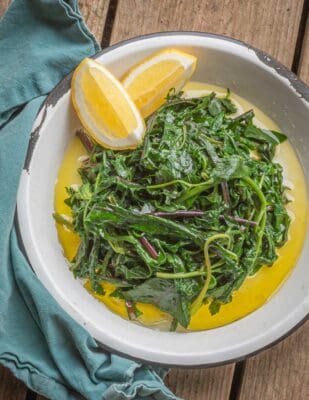
What is Horta?
Around the world there's many wild food traditions where one word can be used to describe hundreds of edible wild plants. In Japan they have sansai or "mountain vegetables". In Mexico, they call their wild edible plants quelites.
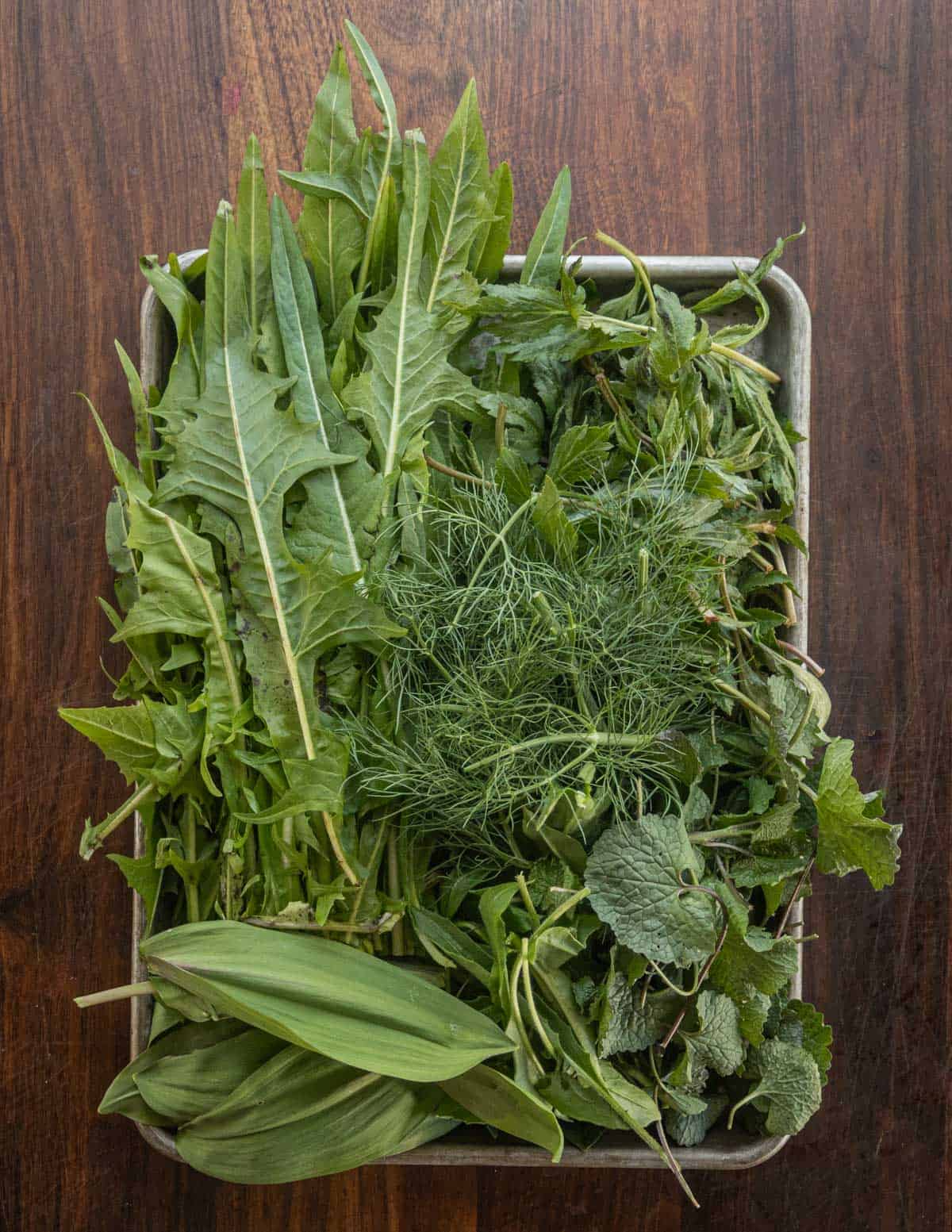
Horta means wild greens in Greek, and, just like the others, the word can be used to refer to a multitude of wild plants that can be cooked together. I rarely make it the same way twice.
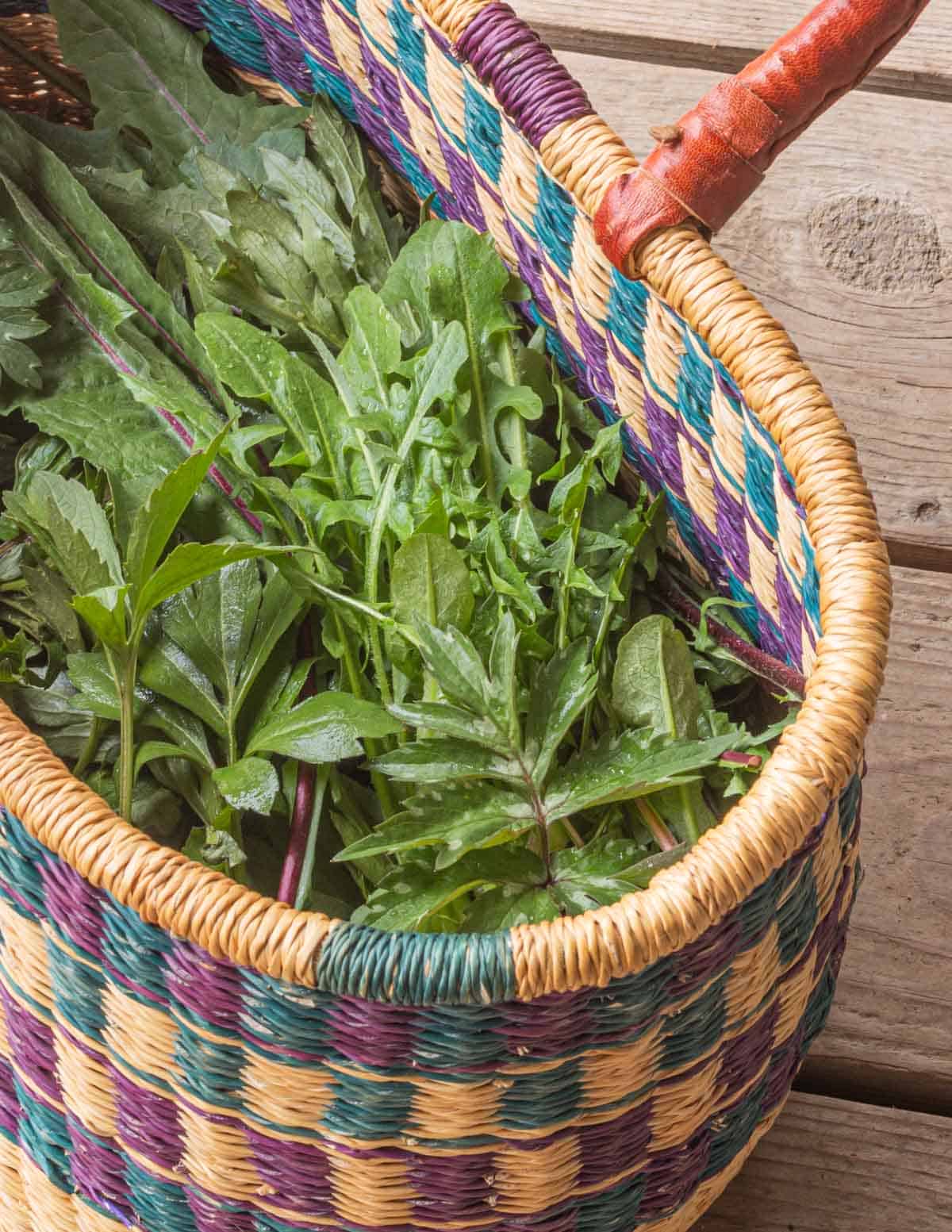
There's a few things that make horta different from a Japanese bowl of Sansai udon noodles or tacos de quelites. Here's what I consider some key differentiating points:
- Horta is a mix of leafy green plants.
- The plants are boiled, this ensures they're uniformly tender and helps calm bitter flavors of some plants.
- The plants need to be the star. Olive oil, fresh lemon juice, and a sprinkle of the best salt you can find are the only seasoning that's needed.
- Ideally, the plants should be young enough they can be boiled whole and not cut up. This allows you to eat the entire plant in a bite and appreciate differences in tastes and textures.
Besides the basic dish of boiled greens with oil and lemon I'm sharing in this post, horta also has derivative recipes. One of the best known is hortopita-a wild greens pie baked with feta cheese in phyllo dough. My friend Ellen Zachos has hortopita recipe some of my friends swear by.
A Few Greek Horta Plants
There's hundreds of plants that can be known as horta, so this is a great place to make your own blend of greens with what's available in the moment.
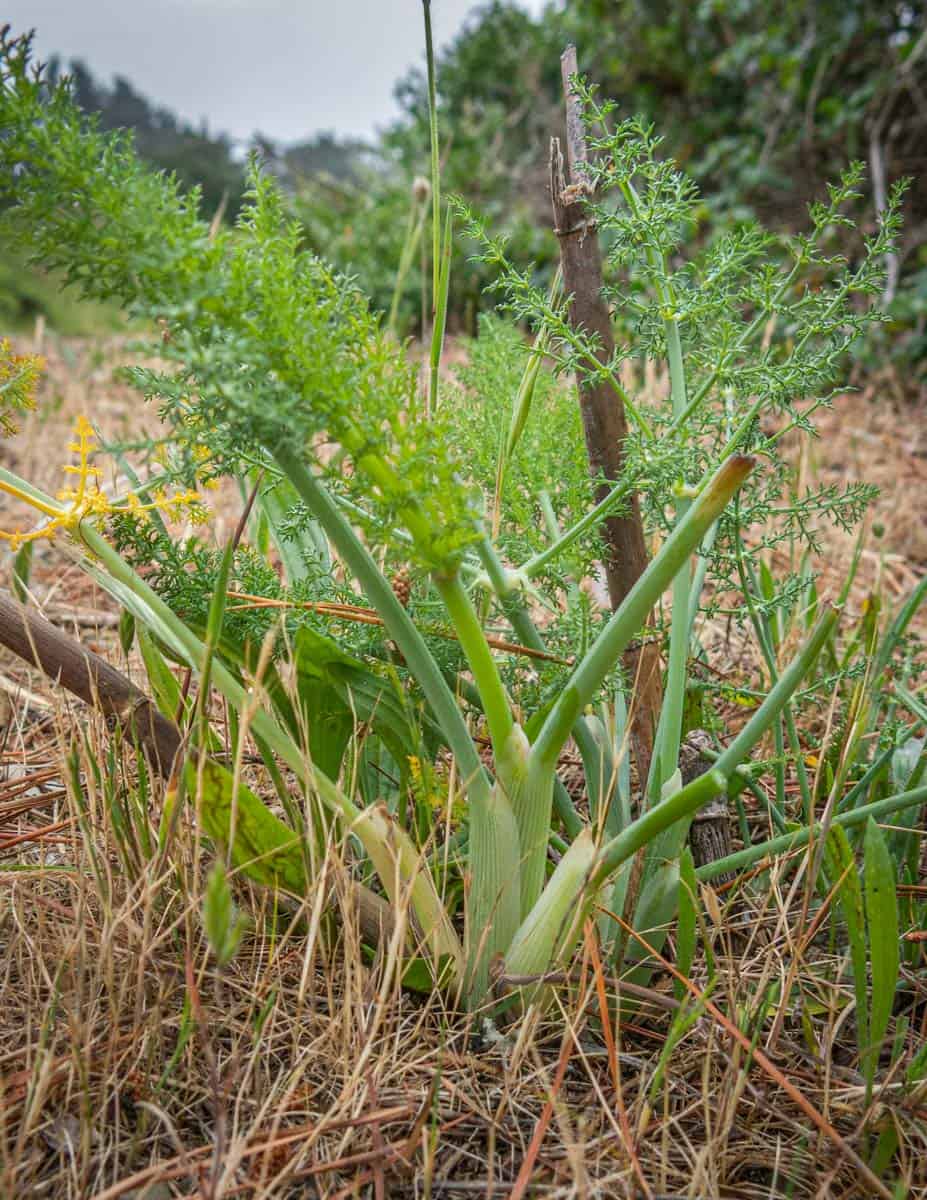
Here's a quick list of 20 horta plants and their local / colloquial names.
- Bitter Dock (Rumex obtusifolius) known as lapatho in Greek
- Golden thistle (Scolymus sp), a relative of artichokes and cardoons
- Amaranth greens, known as vlita (Amaranthus blitum and others)
- Black Nightshade (Solanum nigrum complex) known as styfno
- Mallow greens or moloha in Greek (Malva silvestris)
- Borage greens, known as boratzi (Borago officionalis)
- Sow thistle greens (Sonchus oleaceous)
- Black bryony shoots (Tamus communis) known as avronies.
- Common dandelion greens or radiki in Geeek (Taraxacum officinale)
- Chicory (Chicorium intybus) like dandelions, these are also known as radiki
- Garden cress or kadamo in Greek (Lepidium sativum)
- Mediterranean hartwort or kafkalida in Greek (Tordylium apulum)
- Common nettles or Tsouknida (Urtica dioica and others)
- Redstem stork’s bill (Erodium cicutarium), known as Monk or kalogeros in Greek
- Shepherds Purse (Capsella bursa-pastoris)
- Mediterranean wild mustard greens or vrouves in Greek (Hirschfeldia incana and others)
- Prickly golden fleece (Urospermum picroides)
- Prickly Lettuce (Lactuca serriola) or petromaroulo in Greek
- Purslane (Portulaca oleracea). Known as glistrida, meaning slippery
- Wild Fennel (Foeniculum vulgare)
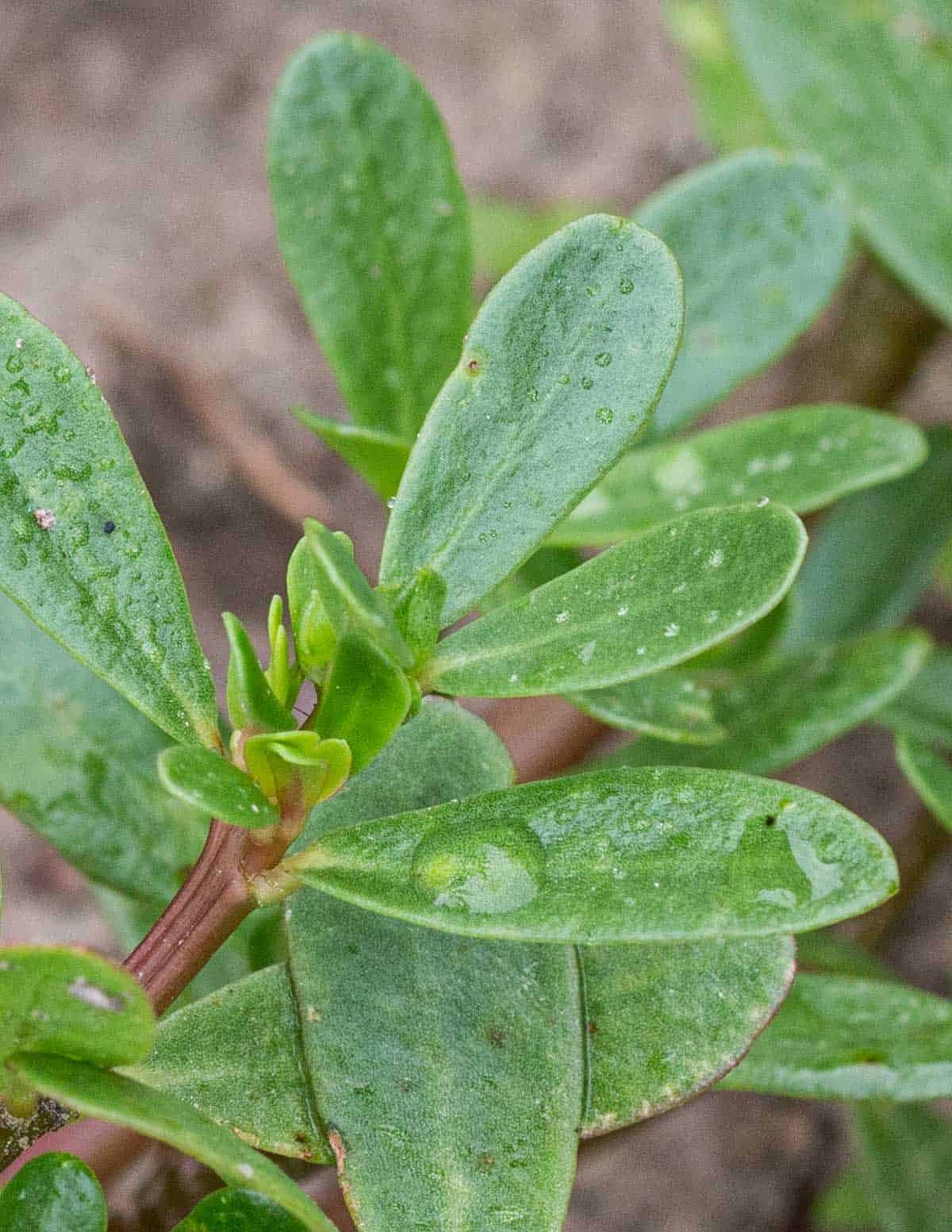
My Simple Horta Recipe
This is a simple dish to make: all you need are fresh wild greens, lemon, salt, olive oil and water. With such few ingredients, it's important to pay attention to the technique.
To make it, first you bring a large pot of salted water to a boil and add the greens. It's important the water is salty enough to taste like the sea.
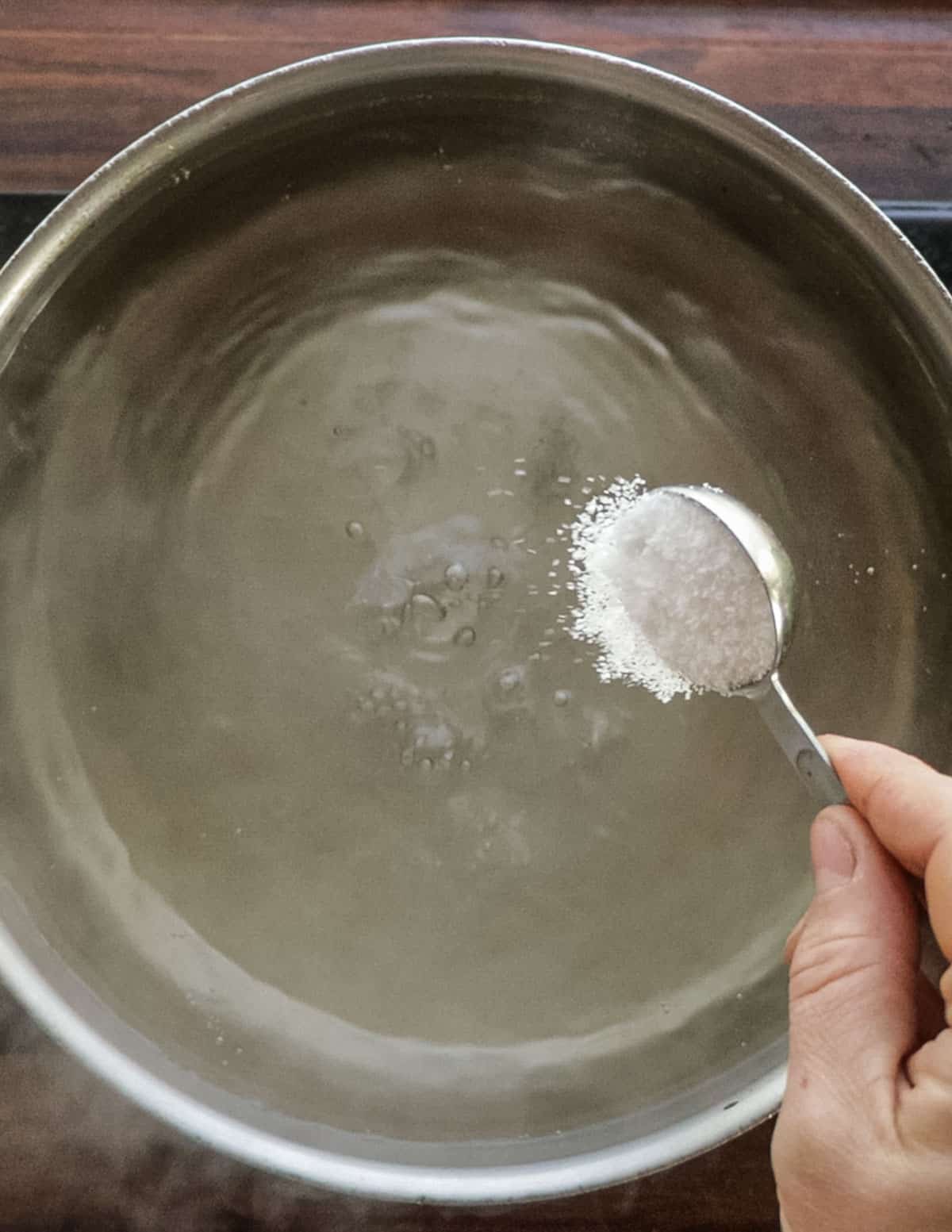
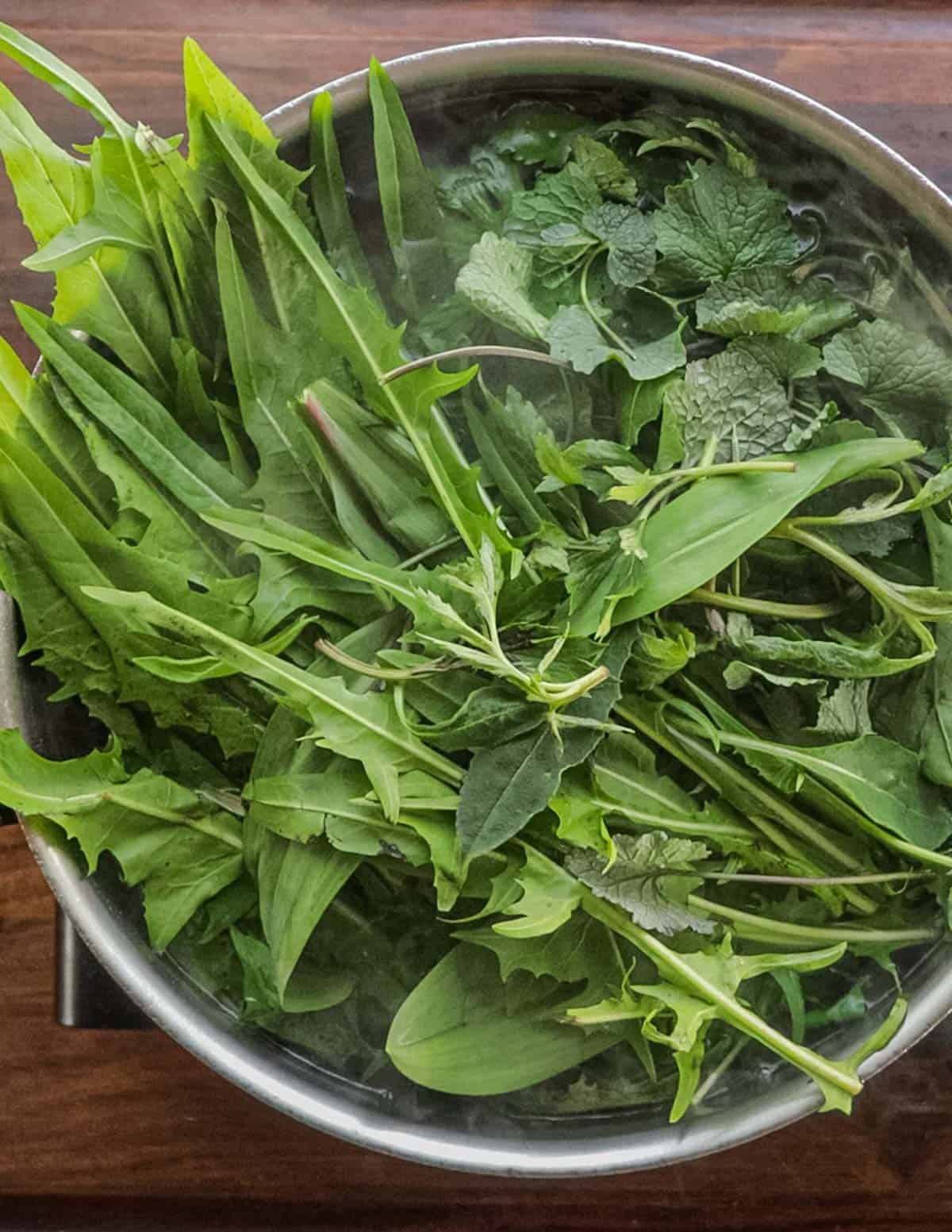
Push the greens under the water and boil them until just tender. Some greens will take longer than others to become tender so you'll need to use your instinct here. When they're tender, remove the greens and drain in a colander.
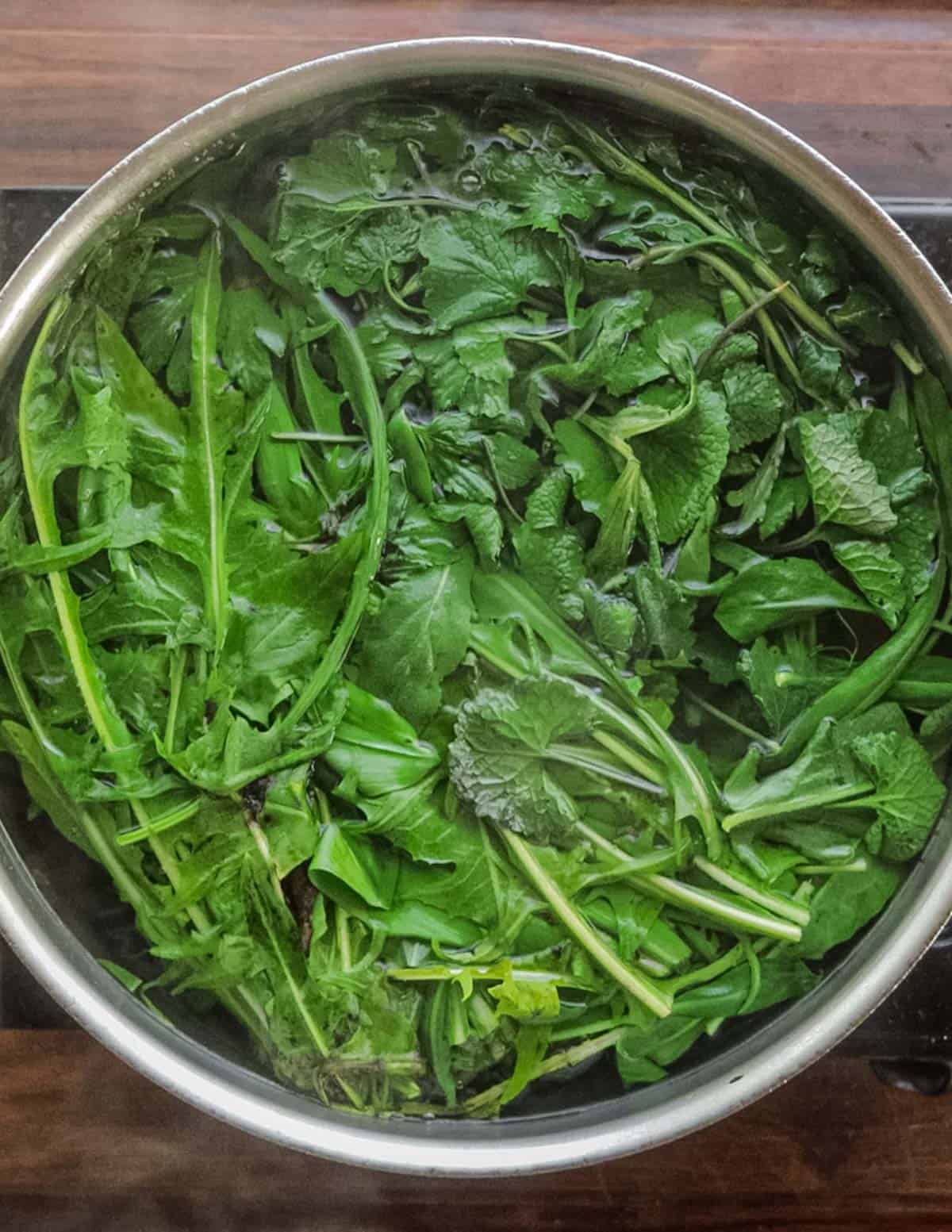

Arrange the greens, spreading them out in a serving dish so they don't look like a pile of grass clippings. Drizzle them with your best Extra virgin olive oil, or another oil you like. I really like Smude's sunflower oil which has a strong sunflower / aster flavor.
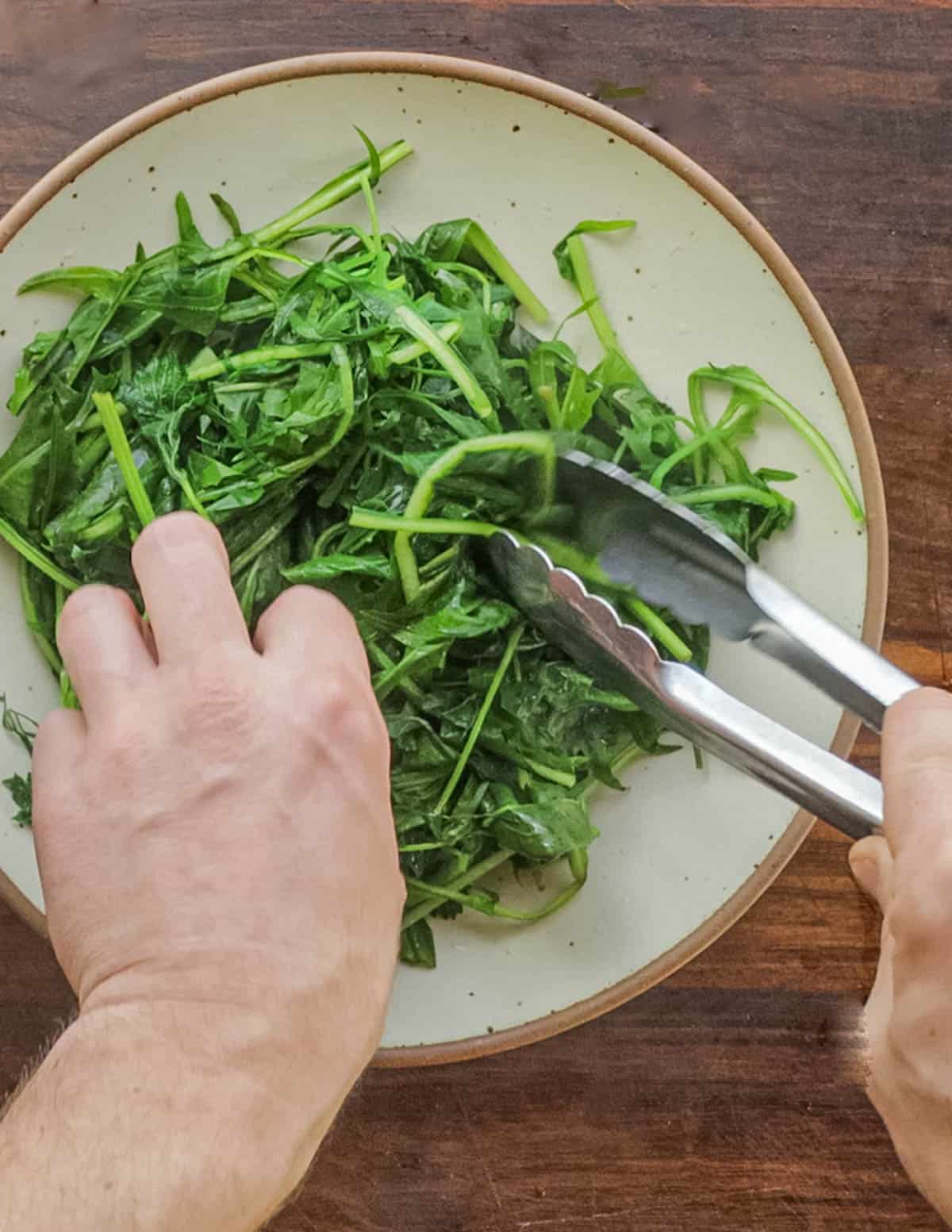
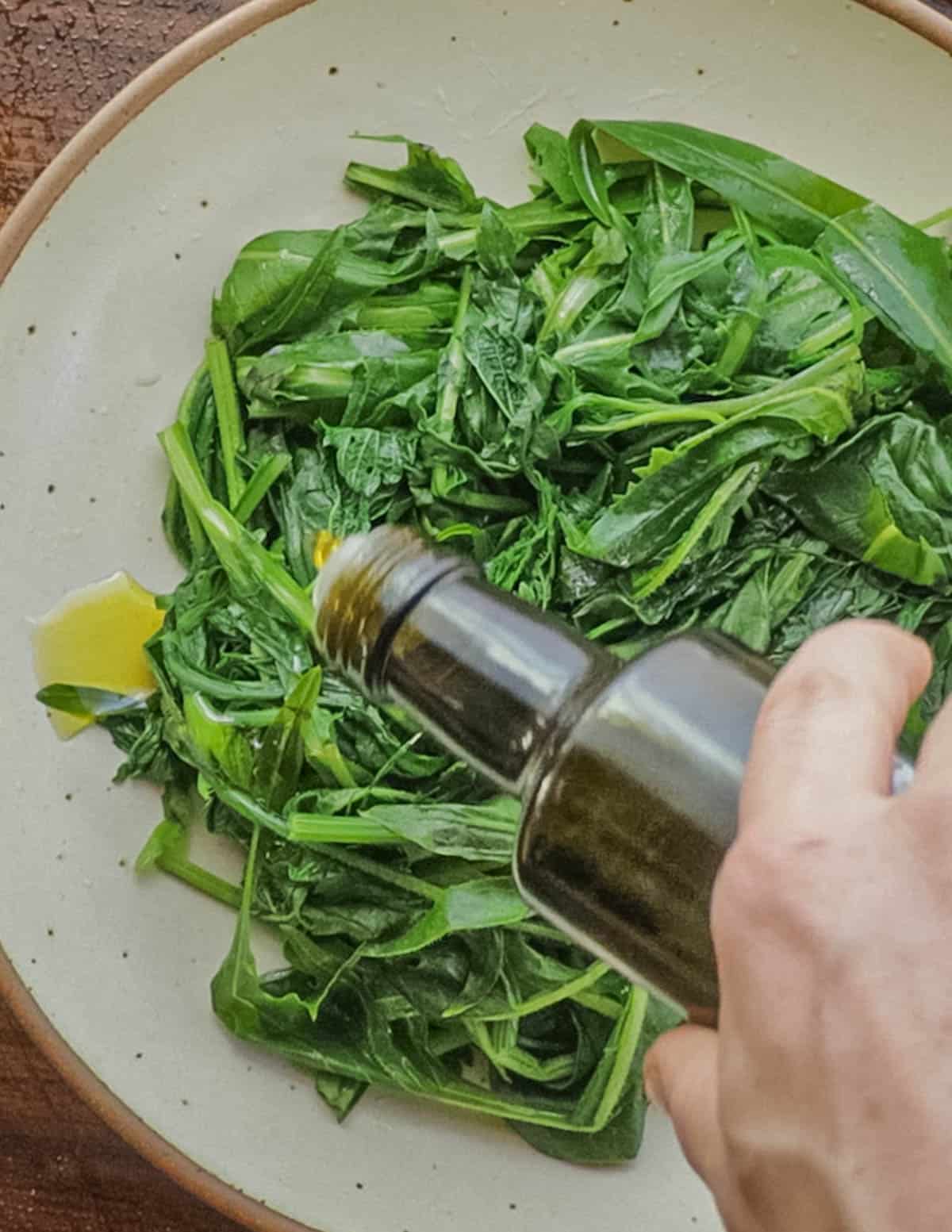
Finally, season the greens with salt and fresh squeezed lemon juice and serve. Instead of using a knife and fork, twirl the greens around a fork.

Using so few ingredients keeps the greens as the star of the show. The flavor of the greens mixed together, drenched with oil and salt keeps the flavor fresh and bright.
Related Posts
- Cicoria en Padella: Italian Wild Greens with Garlic and Chili
- Hindbeh: Lebanese Dandelions with Caramelized Onions
- Quelites: The Edible Wild Greens of Mexico
Horta: Greek Wild Greens with Olive Oil and Lemon
Equipment
- 1 2 gallon pot, like a pasta pot
Ingredients
- 1 lb Fresh, young wild greens like dandelions, nettles, purslane and fennel greens
- 1 gal Water for boiling the greens
- 3 tablespoons Kosher salt
- 1 whole lemon
- ½ teaspoon Finishing salt, to taste Maldon salt, Faulk salt, or HImalayan pink salt are good options
Instructions
- Soak the freshly picked greens in a bowl of cold water for 10 minutes to refresh them.
- Bring the water and salt to a boil in a large pot with a lid.
- Add the greens, put the lid on and bring the pot back to boil.
- Remove the lid cook the greens for 60 seconds, stirring to make sure they're all wilted.
- Remove one of the greens and taste it. Some greens may cook very quick, some may take longer. When it's tender and tastes good to you, drain the greens in a colander.
- Allow the greens to drain naturally for a minute, turning them over in the colander.
- Remove the greens to a wide pre-heated serving bowl and drizzle with olive oil.
- Serve horta with lemon wedges and allow guests to sprinkle the finishing salt on to their taste.
Video
Notes
- Use a mix of young, tender wild greens picked before the plants make flowers.
- It's important to cook the greens at a rapid boil until they're tender and taste good to you for the best texture.
- Some plants will take longer to become tender than others.
- Ideally you'll use a blend of foraged plants but mixed leafy greens from a farmers market work in a pinch.


Stella
My Mama use to make this dish. My Niece gave me the Greek Recipe because I forgot how my Mom made it. It's so good. I have it with Crusty Bread. Yummy Yummy.
Alan Bergo
Thanks Stella.
Thea
Alan—You’re a mindreader! I was just in Corfu last week where I had nettle feta pie several days in a row, and every evening out was served exactly the greens you describe a side dish! Time to get out and harvest some tender Minnesota spring nettles!
Alan Bergo
Thea! Tis the season. Sounds like a dreamy trip 🙂
Dan F
Just last night for dinner, I made a gratin with what would be this. I had ramp leaves to use up, and I thought about a gratin, but figured ramp leaves alone would be too strong, so I gathered some dandelion greens, wild mustard blossoms, a little young garlic mustard, plantain, and wood nettles to tame the ramp leaves down a bit. It worked beautifully.
Alan Bergo
Oh yeah! It's peak green season where we live. I find ramp leaves get nice and sweet after cooking until tender.